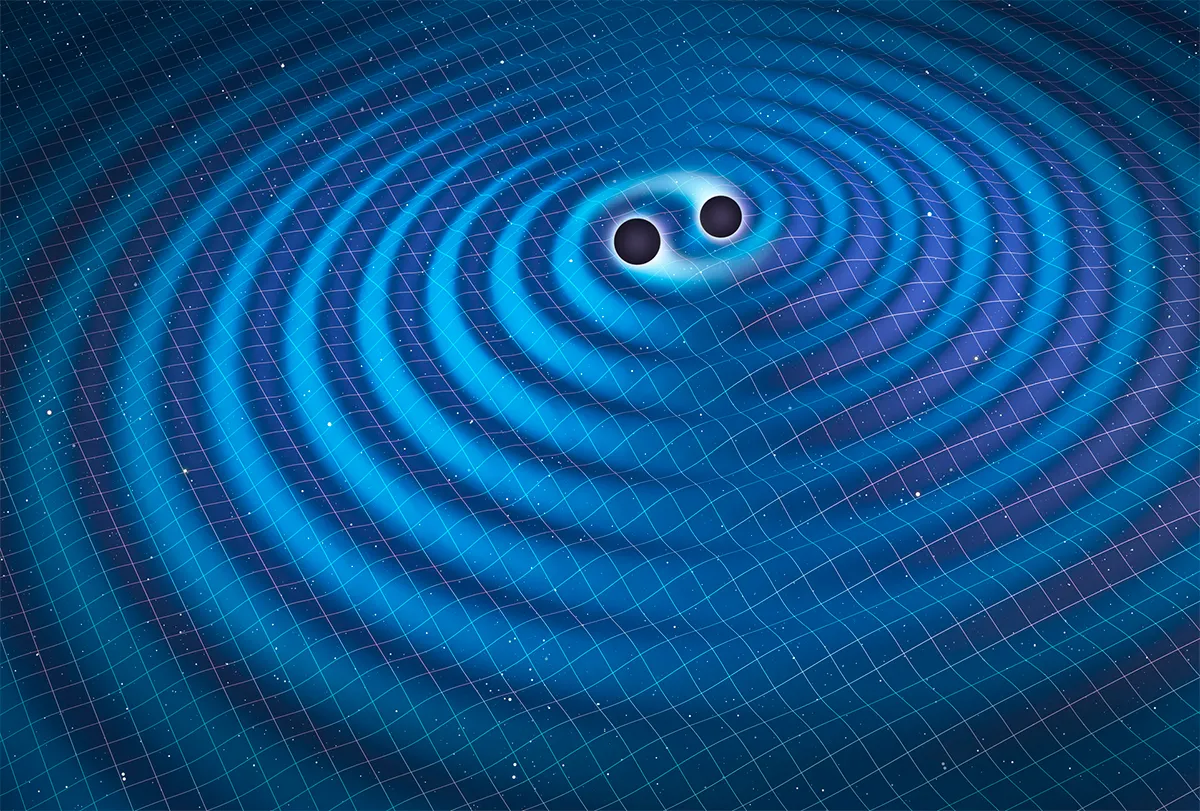Alien spaceships that use warp-drive technology could be detected by the gravitational waves they produce, according to a study.
If we're interested in searching for technologically advanced species in the Galaxy that have mastered travelling at 'warp speed', gravitational waves detection may be the way to do it.
A staple of science fiction books, films and TV shows like Star Trek, warp-drive technology effectively enables faster-than-light travel by producing a 'bubble' that compresses the spacetime between a spacecraft and its destination.
"Even though warp drives are purely theoretical, they have a well-defined description in Einstein’s theory of General Relativity," says Dr Katy Clough, the study’s lead author from Queen Mary University of London," and so numerical simulations allow us to explore the impact they might have on spacetime in the form of gravitational waves."

Detecting warp drives with gravitational waves
The construction of warp drives is currently beyond humanity's capabilities, but what about detecting other civilisations that may have mastered the concept?
The study authors say gravitational waves could be the answer.
Gravitational waves are often referred to as 'ripples in spacetime' because they are distortions in the fabric of time and space caused by cataclysmic events, such as two black holes colliding.
They were theorised by Albert Einstein, and the first confirmed detection of gravitational waves was announced on 11 February 2016 by David Reitze, executive director of the US Laser Interferometry Gravitational-Wave Observatory (LIGO).
The team behind this particular warp-drive study, from Queen Mary University of London, Cardiff University, the University of Potsdam and the Max Planck Institute (MPI) for Gravitational Physics, say ripples in spacetime emitted by the bubble collapse of warp-drive technology could be found using gravitational wave detectors.
The study is published in the Open Journal of Astrophysics and looks into how exploring new spacetimes could simulate what no-one has observed before.
"Miguel Alcubierre created the first warp drive solution during his PhD at Cardiff University in 1994, and subsequently worked at the MPI in Potsdam," says study co-author Dr Sebastian Khan, from Cardiff University's School of Physics and Astronomy.
"So, it’s only natural that we carry on the tradition of warp drive research in this era of gravitational wave astronomy."

What they found
Any signal generated from a warp bubble of about 1km in size would be a short, high-frequency burst, which is beyond the abilities of current detectors to pick up.
But, say the authors, future higher-frequency instruments might be able to, and are not beyond our current technology.
"In our study, the initial shape of the spacetime is the warp bubble described by Alcubierre," says Dr Khan, who cautions:
"While we were able to demonstrate that an observable signal could in principle be found by future detectors, given the speculative nature of the work this isn’t sufficient to drive future instrument development."
The study also found that the collapse of warp-drive matter would emit a wave of negative energy matter followed by alternating positive and negative waves.
This results in a net increase in the overall energy of the system, and could produce another signature of the warp-drive bubble collapse if the outgoing waves interacted with normal matter.

What the physics means
Isn't this all just speculative science fiction? The study does have real scientific implications, say the authors.
"For me, the most important aspect of the study is the novelty of accurately modelling the dynamics of negative energy spacetimes," says Professor Tim Dietrich from the Max Planck Institute (MPI) for Gravitational Physics, a study co-author, "and the possibility of extending the techniques to physical situations that can help us better understand the evolution and origin of our universe, or the avoidance of singularities at the centre of black holes."
Now the team plan to look into how different warp drive models would produce different signals, and invesitgate the collapse of bubbles travelling at speeds exceeding the speed of light.
The paper is entitled What no one has seen before: gravitational waveforms from warp drive collapse and is published in the Open Journal of Astrophysics.

